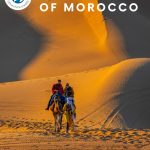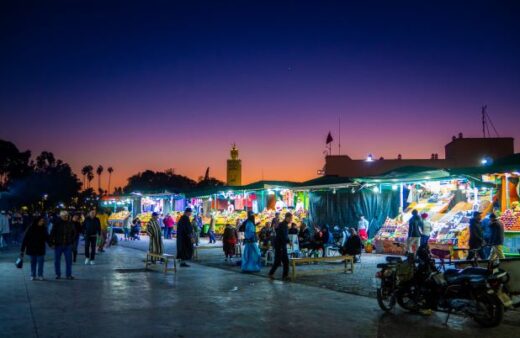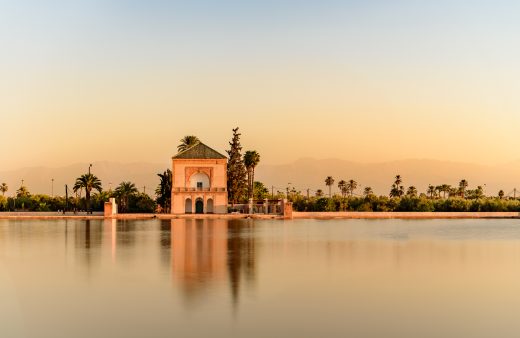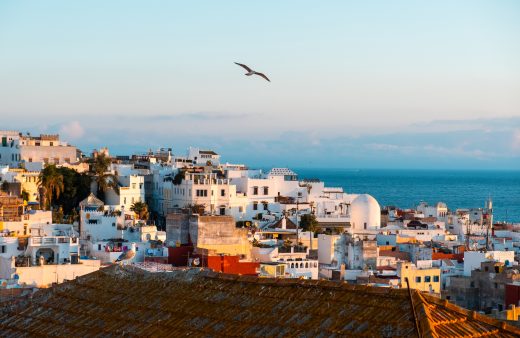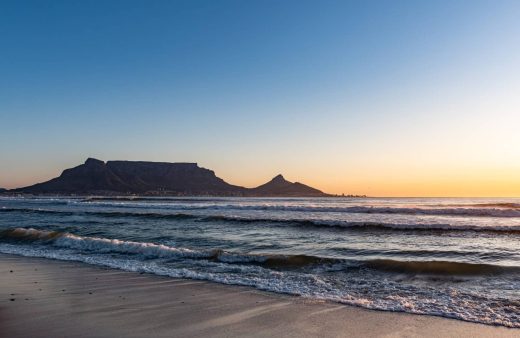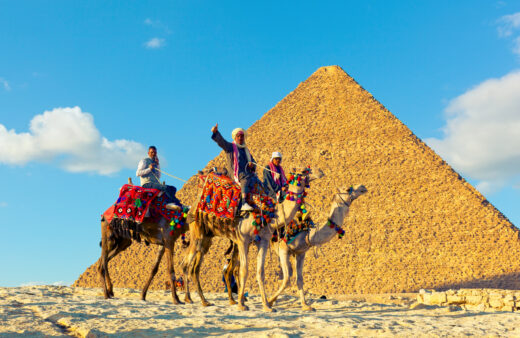- Trip description
- Travel itinerary
- Price includes
- Gallery
Embark on an extraordinary journey to the heart of Morocco, where ancient traditions, vibrant cultures, and breathtaking landscapes converge to create an enchanting tapestry of exploration. Our carefully curated program invites you to uncover the hidden gems and timeless treasures that make Morocco a jewel in the crown of North Africa.
From the bustling markets of Marrakech to the mystical allure of the Sahara Desert, this expedition promises a rich tapestry of experiences. Immerse yourself in the labyrinthine streets of ancient medinas, marvel at architectural wonders, and savor the flavors of Moroccan cuisine that dance on your palate.
Beaches
Culture and history
Entertainment
Trekking/hiking
Travel itinerary
Flight to Casablanca
As we conclude the meticulous passport and baggage check, our journey unfolds, guiding us to the enchanting land of Morocco in North-West Africa, nestled within the vibrant region known as the Maghreb.
While Morocco may not be endowed with abundant oil or other traditional resources, it stands as a testament to the richness found in its diverse landscapes, captivating cultures, delectable cuisine, and, above all, the open-hearted warmth of its people.
This journey transcends mere exploration; it’s an immersion into the soul of a nation that unfolds its treasures to those who venture within.

Casablanca
Upon touching down in Casablanca, our gateway to an oriental odyssey through the lands of Arabs and Berbers, our journey commences. From the outset, we plunge into the rich history of a city founded in the 10th century BCE by Berber fishermen.
At the hotel, dinner and rest await us after the flight.
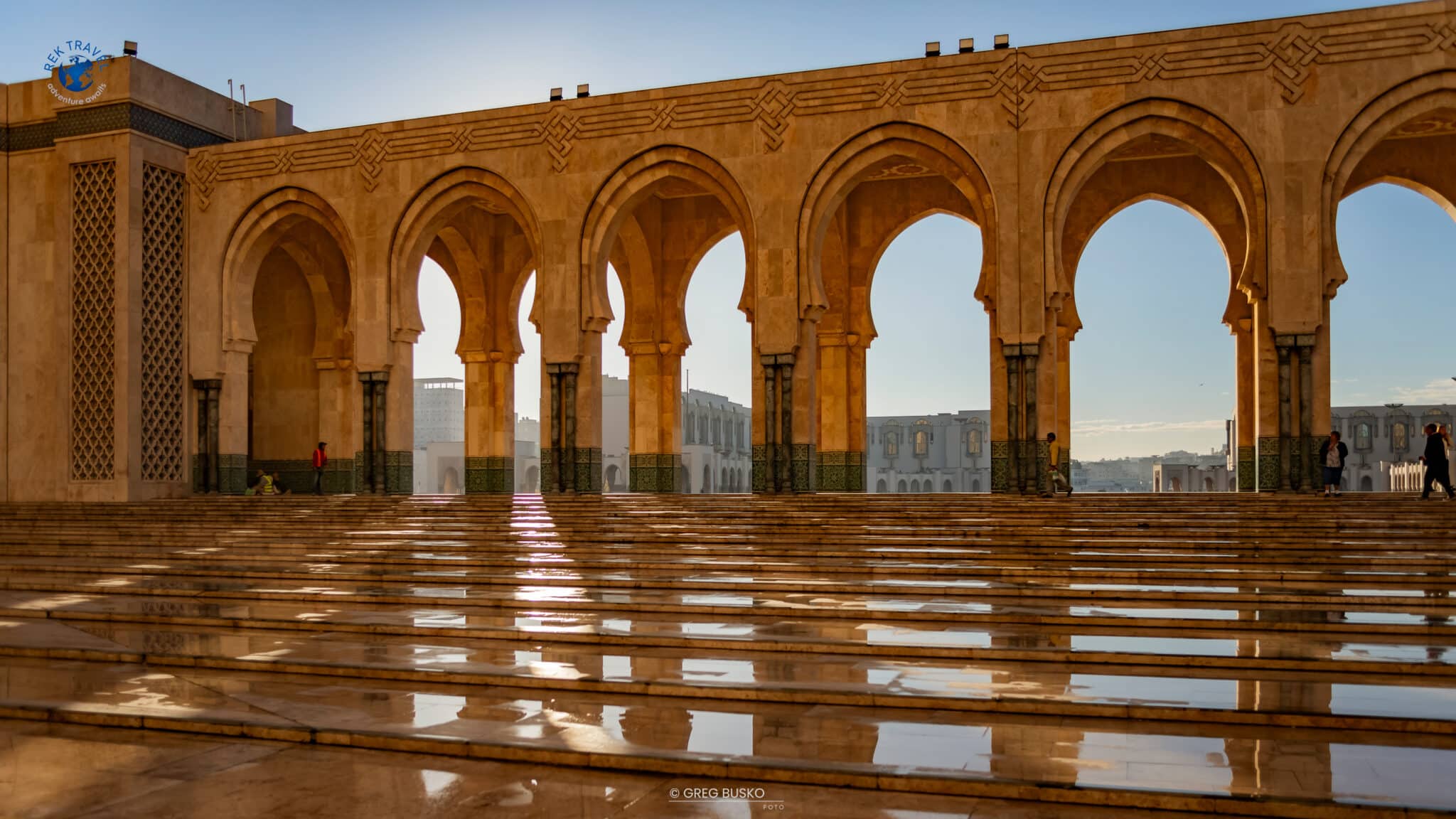
Casablanca, Rabat, Chefchaouen
After breakfast, our day commences with a visit to the mesmerizing Hassan II Mosque, a fascinating example of Moroccan architecture. The mosque, with its extraordinary attention to detail, combines elements typical of Moroccan construction – colorful tiles, cedar wood roofs, mosaics, marble colonnades, and more. The 210-meter minaret attached to the mosque is a symbol and pride of Casablanca, and a showcase of the skill of Moroccan builders and craftsmen. The mosque’s location over the Atlantic Ocean reflects the Quranic message of God’s throne being upon the water. This highlights both the aesthetic and spiritual aspect of the sacred building.
After leaving Casablanca, our journey takes us to the nearby Rabat – the modern and chic capital of the Kingdom of Morocco.
There, the Hassan Tower awaits us, an unfinished minaret and mosque from the 12th century. Originally intended by the sultan at the time, al-Mansur, to be the tallest minaret and largest mosque of its time, the unexpected death of the ruler halted these grand construction plans. Consequently, the unfinished tower only reaches 44 meters (144 feet) high, about half of its intended height. In the 1960s, the mausoleum of Sultan-King Mohammed V – the grandfather of the currently reigning Mohammed VI – was constructed next to it.
By evening, our route leads us to Chefchaouen. For our night’s rest, a traditional Moroccan house, converted into a hotel, welcomes us.
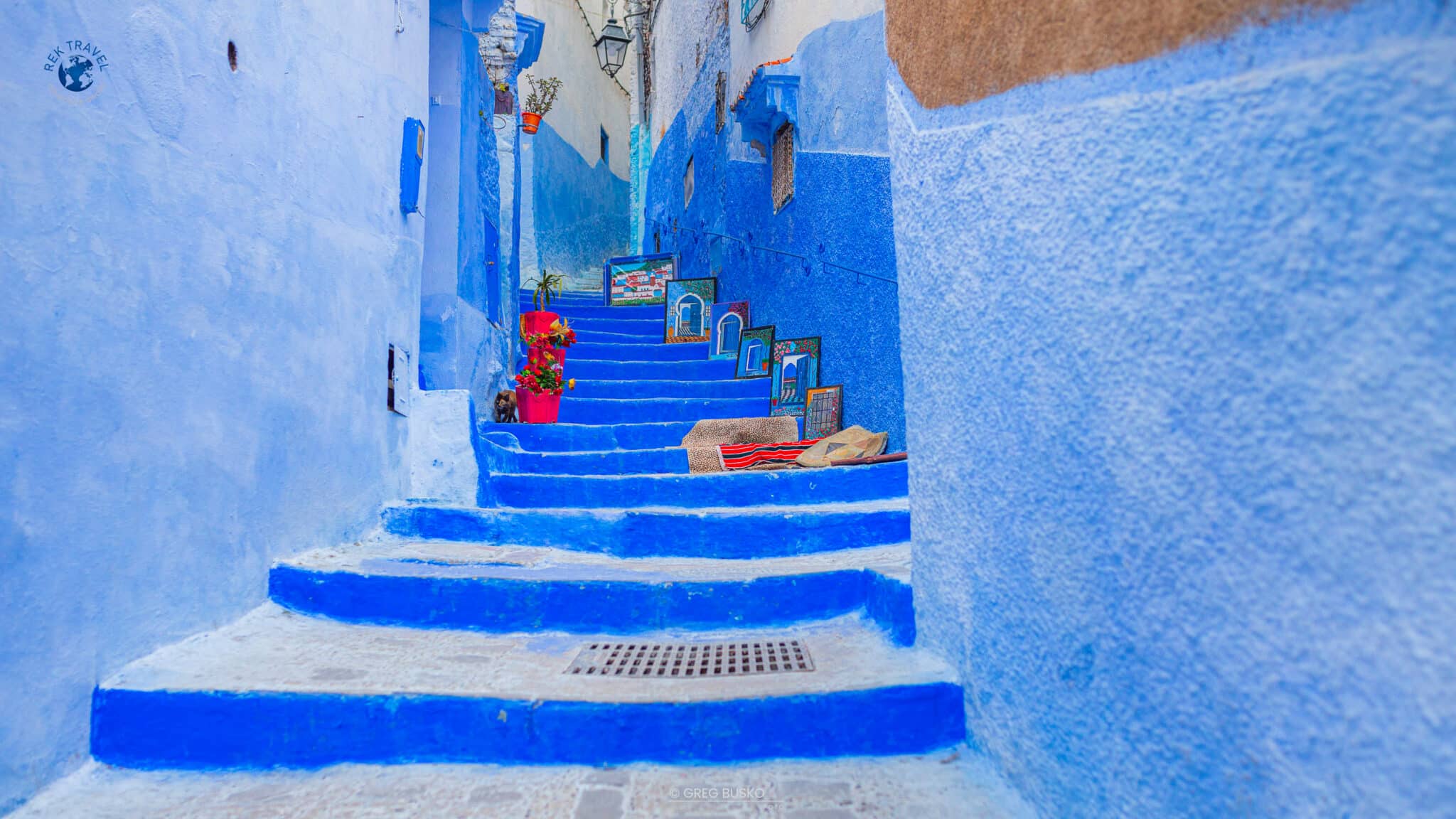
Chefchaouen, Volubilis, Fes
Chefchaouen is often called the “Blue Pearl of Morocco” because of the color most of the town’s buildings are painted in. The tradition of painting houses blue dates back to the time of the Reconquista and the Inquisition in Spain. After the fall of Muslim rule in the southern part of the Iberian Peninsula, the Spaniards expelled most Jews. They found refuge in the Ottoman Empire and Morocco, among other places. Sephardic Jews brought with them the Andalusian architectural style, developed crafts, and numerous customs, including painting houses blue. Originally, this was meant to signify their adherence to the Jewish faith, but after nearly all Moroccan Jews moved to Israel, it has simply become a part of local aesthetics, unconnected with religion.
A morning walk through the town will allow us to discover its most interesting and beautiful corners. Our sightseeing plan will include so-called instaspots, known for great photos in social media. We, too, will have the chance to pose there and share our best photos online.
The next stop on our way is the ancient Roman city of Volubilis. Dating back to the 3rd century BC, with most structures erected in the 1st century AD, Volubilis once served as the capital of the Roman province of Mauretania. There, perfectly preserved mosaics await discovery, offering insights into the daily lives of the Romans and showcasing their civilization’s advancements.By evening, the journey leads to Fez, where a hotel stay is arranged for the night.

Fez, Ifran, Boulaajoul
The day in Fez begins with a visit to the king. Well, almost. We’ll approach the palace gates, and although entry inside isn’t permitted, it still presents a fine opportunity to learn more about the ruling Alawite dynasty in Morocco and the country’s unique system of governance. Next, a drive up the hill offers an incredible view of the Fez medina.
The medina is simply the old part of the city. In ancient times, cities in Morocco were built compactly, with an irregular street layout. A type of building known as a riad, a tall square-shaped house with a sizable courtyard in the center, was dominant. The medina is divided into districts, full of shops and craft workshops. In Fez, old methods and production traditions are still being practiced to this day. Walking through the Fez medina, we’ll see masters and apprentices at work. We’ll also visit one of the most important centers of learning in the ancient Muslim world – the intricately decorated Bu Inania Madrasa from the 14th century, a medieval caravanserai, the oldest functioning tannery in the world, and several other significant sites. A stay in Fez will also provide an opportunity to purchase high-quality souvenirs, such as lamps, ceramics, carpets, and leather goods.
From Fez, we’ll head south, making a stop in Ifrane – a mountain town known as the “Switzerland of Morocco.” The route takes us through picturesque cedar and spruce forests. In one of these forests, if fortune favors us, we might see macaques – incredibly friendly monkeys.
As the day concludes, we retreat to the comforts of the hotel in Boulaajoul. Its location on the plains between the Atlas mountain ranges, far from larger cities, will allow us to observe the stars at night.
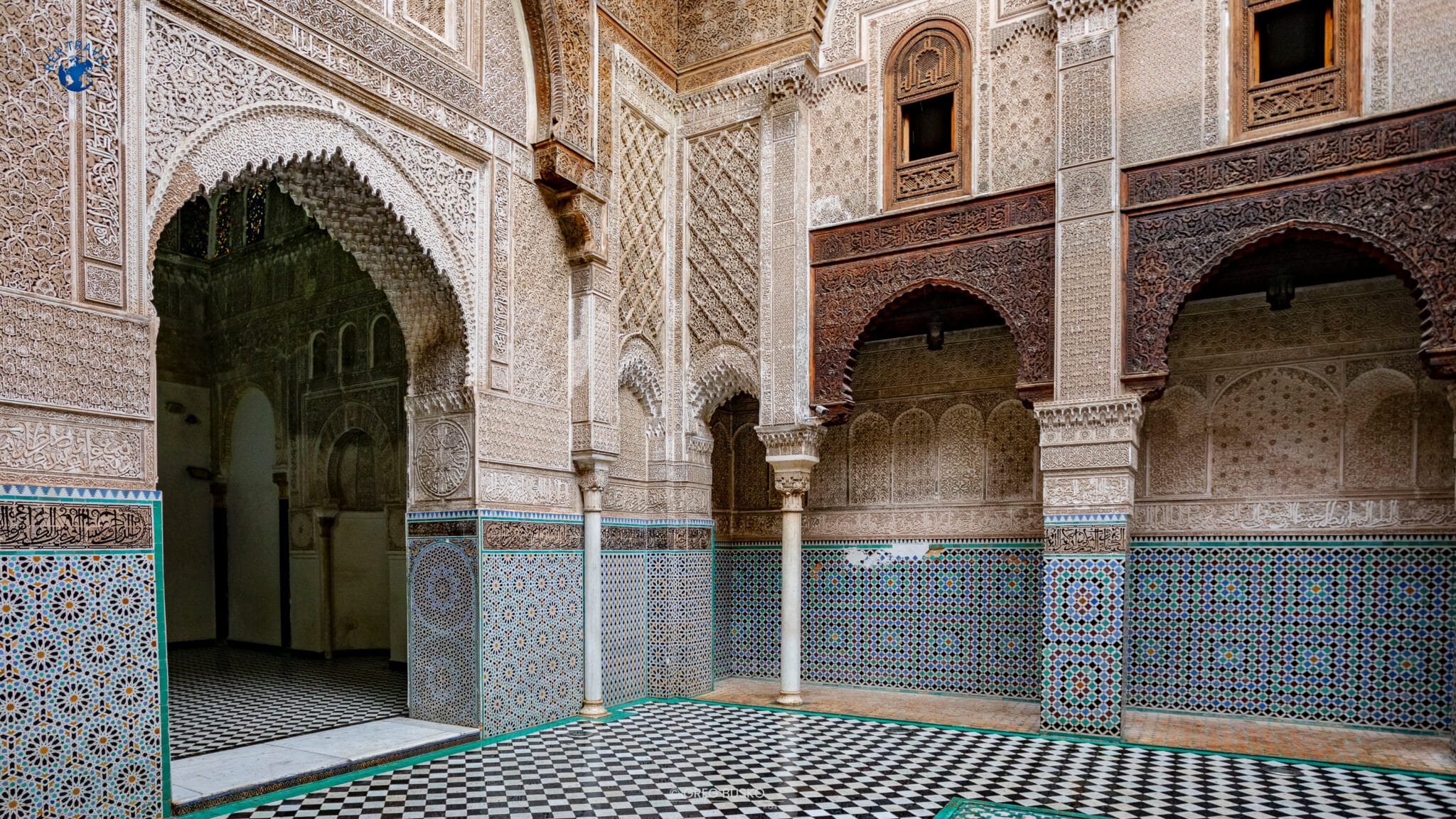
Midelt, Er-Rachidia, Merzouga
Setting out further south this day, the journey takes us through Midelt, a city celebrated for its orchards and the finest apples in Morocco. The beautiful, date palm-studded Ziz Valley comes into view, along with the city of Errachidia nestled within. An opportunity arises to sample and purchase the sweet dates, offering insights into their cultivation and a deeper understanding of the region’s economy.
In the afternoon, the journey reaches Merzouga, a quaint desert village on the edge of Algeria. Essentials packed, everyone mounts camels for a trek to a Berber camp nestled in the desert expanses. This camel ride, lasting roughly an hour and a half, winds through breathtaking dunes that shift hues with the day’s progression, peaking in vibrancy by late afternoon and evening. The allure of the expedition is magnified by a mesmerizing sunset over the Sahara’s dunes. As night descends around the camp, a gathering around the campfire ensues. With Moroccan mint tea in hand, accompanied by songs and rhythms of drums, an unforgettable evening unfolds.
The evening will unfold in comfortably appointed, spacious tents, ensuring a restful night amidst the desert.
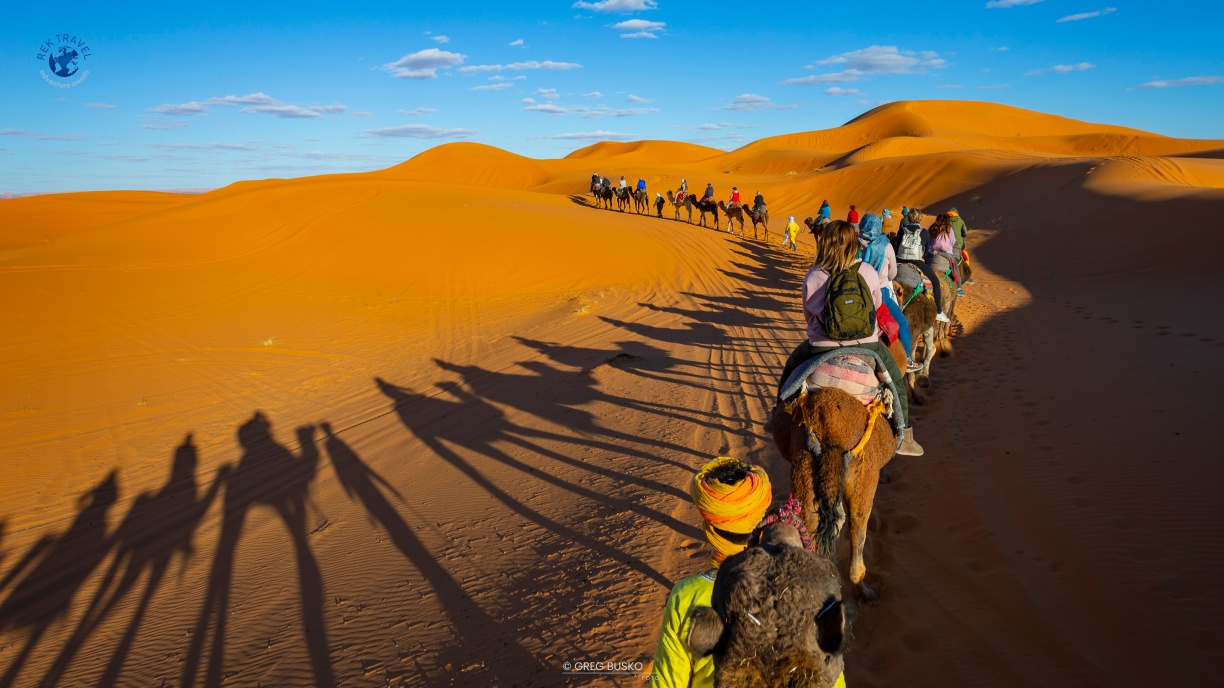
Jeep 4X4, Merzouga
After leaving the tents and our desert camp, a 4×4 drive through the desert awaits. On this side of the Sahara, it’s possible to encounter Berber nomads, whose lives are still deeply rooted in traditional herding. A closer look will be taken at the challenges of nomadic life for people who, due to closed national borders, cannot traverse the Sahara with caravans as their ancestors did. Insights will include how local children are educated, the value of goats and camels, why nomads continue to live in tents in the desert despite their restricted movement, and more. Additionally, the hospitality of these people will be experienced firsthand during a visit to one of the tents for tea.
Traversing more dunes, the journey will lead to the old French lead mines. There, stories of colonial exploitation and the management of Morocco during the protectorate era will be shared. A visit to the black Nubians will follow, where a brief Gnawa concert – a spiritual African music that is the precursor to blues – will be performed. The excursion will then continue to a well-deserved lunch to savor a local delicacy, the “Berber pizza.”
The remainder of the day will be spent relaxing by the pool, under the palms at the hotel – a kasbah in Merzouga.
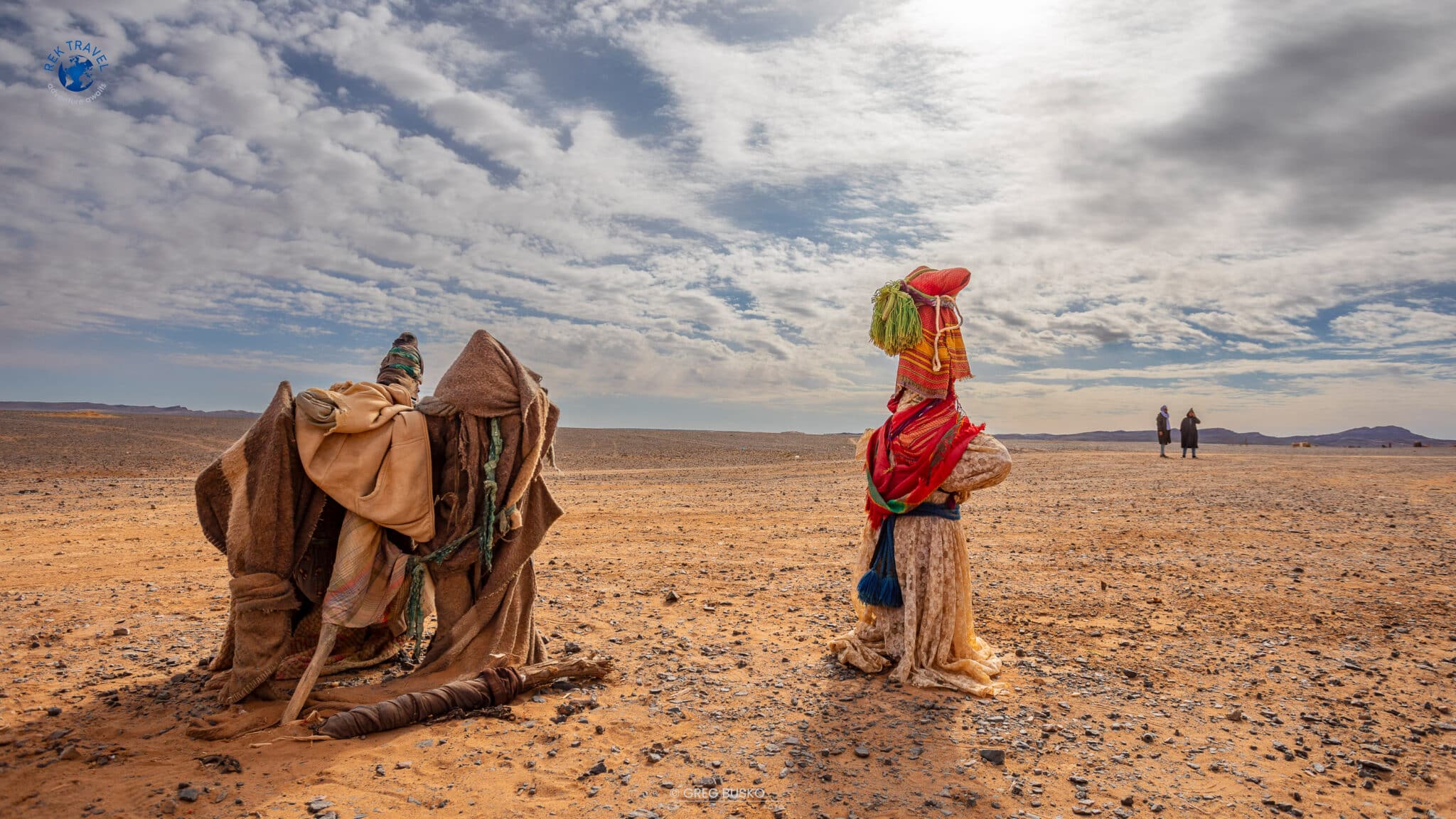
Tinjdad, Todra, Boumalne Dades
As the sun rises, our journey through southern Morocco unfurls, guiding us to the enchanting world of typical fortified villages known as ksars – made from sun-dried mud brick and straw, strategically positioned along caravan routes for their defensive advantages. A tour inside reveals a maze of streets and homes, wells, mosques, and central commercial squares. Many of these villages remain vibrant and are regularly maintained, while others have succumbed to ruin. The journey also features a stroll through the Todra Gorge to admire its striking rock formations, followed by a drive towards the Dades Gorge, a lush oasis in the Sahara. Stops at several viewpoints will allow for capturing the scenic beauty.
The night is reserved in a quaint hotel near the Dades Gorge.
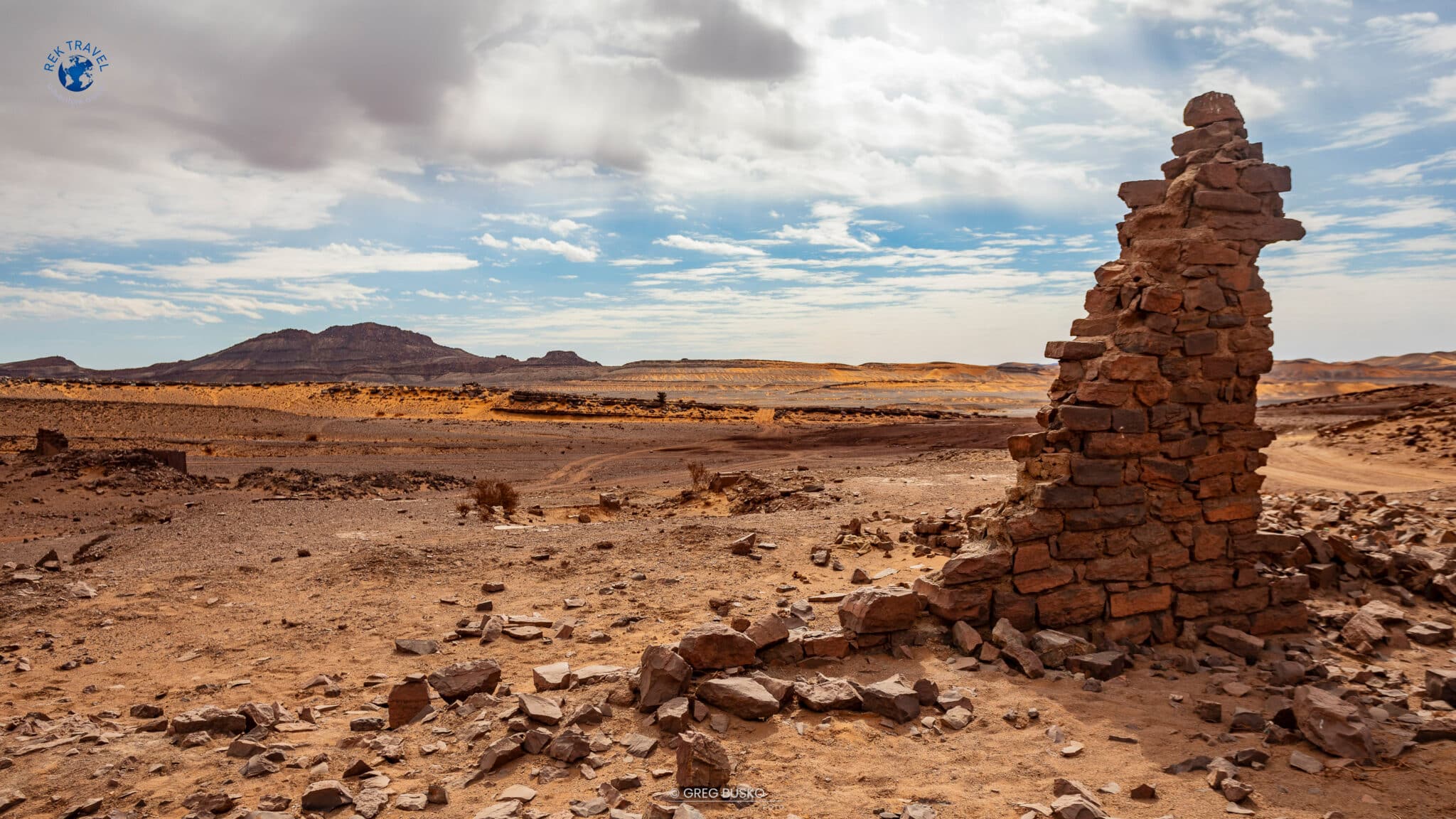
Rose Valley, Ouaryazate, Ait Ben Hadou, Marrakesh
The day’s journey begins with a visit to the Valley of Roses. Annually, the Valley yields around 5000 tons of roses, primarily used for cosmetics production. A visit to a local factory reveals how Moroccan women craft world-renowned rose oils and other high-quality organic cosmetics.
The journey continues along the Road of a Thousand Kasbahs, leading to the Skoura oasis, where delicious dates offer a taste of the region’s sweetness. The next destination is Ouarzazate, often dubbed “Africa’s Hollywood,” home to numerous film studios. The visit includes Ksar Ait Benhaddou, where stories of wealth carried by caravans to Timbuktu unfold, and sites of famous movie shootings, including “Gladiator,” “Kingdom of Heaven,” and “Prince of Persia,” come to life.
This day brings the most challenging route of the journey, navigating through the Atlas Mountains’ numerous switchbacks. This experience will truly highlight Morocco’s diverse geography, climate, and natural beauty. Beyond the mountains lies the final destination, the renowned city of Marrakech.
Upon registering at the Marrakech accommodation, the exploration extends to Jamaa el-Fna, the vibrant core of the city. This square presents a diverse spectacle, featuring snake charmers, monkey handlers, vendors of vintage wares, and stands serving adventurous cuisine. The evening will be capped with a stroll, followed by a night spent at a hotel near the square.
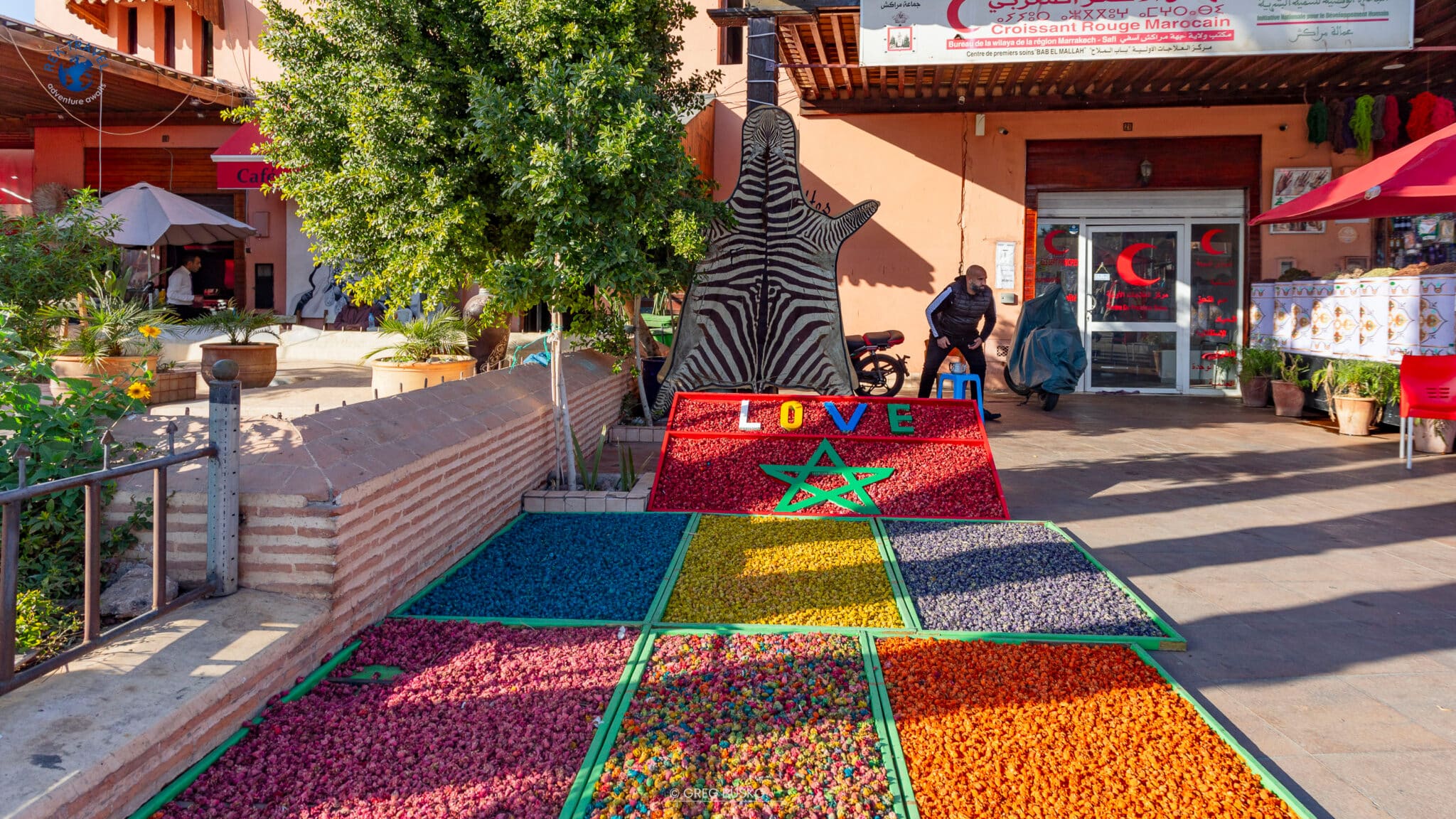
Marrakesh
From dawn, the exploration of Marrakech, a true gem of Morocco, will begin. A touching story of the country’s rises and falls during periods of monarchy and French colonial rule will be uncovered. The perfect starting point for this fascinating journey into history will be the palace of the famous vizier, whose excessive ambition contributed to the nation’s downfall. The Bahia Palace, a testament to Moroccan culture, is also the most visited attraction in the country. The itinerary will also include a visit to the old Jewish quarter of Marrakech, the famous Koutoubia Mosque, and the parks and winding streets of the city, which have inspired writers and travelers for centuries.
As the day unfolds, we relish an earlier dinner in the old part of the city, granting us the luxury of free time to immerse ourselves in the vibrant tapestry of the bazaar and indulge in anticipated shopping experiences.
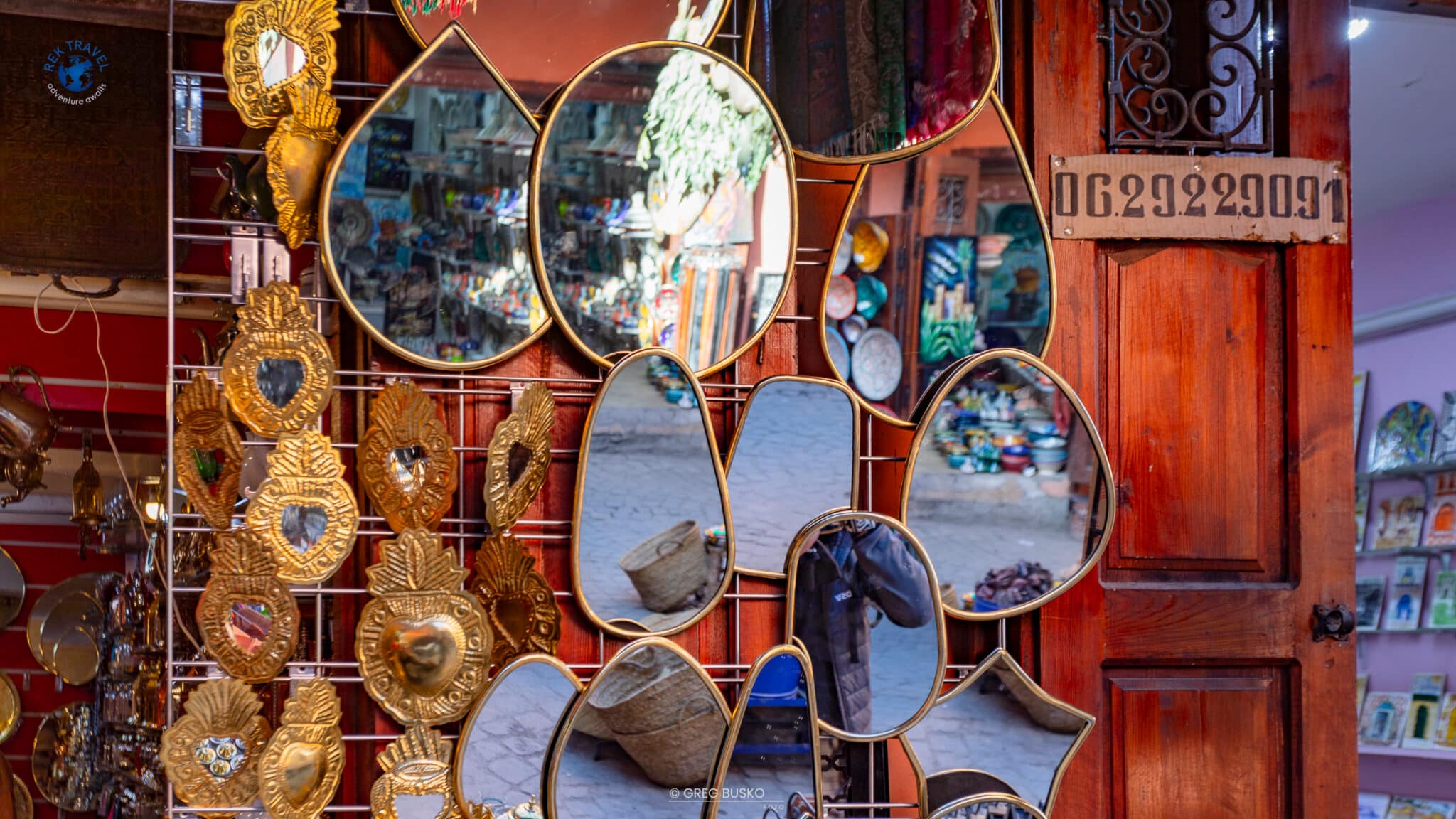
Marrakesh, Essaouira
After bidding farewell to Marrakech, we will set our course westward – to Essaouira. This is an incredibly atmospheric port city, situated on the Atlantic Ocean. The character and architecture of the city were significantly influenced by Portuguese merchants and Sephardic Jews who came in search of riches and who once formed the largest ethnic group living there.
In the 1960s, Essaouira became a haven for European and American hippies, with iconic figures like Jimi Hendrix leaving their creative imprints on its shores. The beach, where Hendrix is said to have composed “Castles made of sand,” stands as a testament to this musical legacy.
Today, Essaouira’s charm continues to captivate free spirits, and we embark on a journey to explore its historic port, sandy beaches, ancient city walls, and bustling streets adorned with vibrant stalls.
As the sun sets, our sojourn concludes with an overnight stay in a riad nestled in the heart of the old town, providing a tranquil retreat amidst the timeless allure of Essaouira.
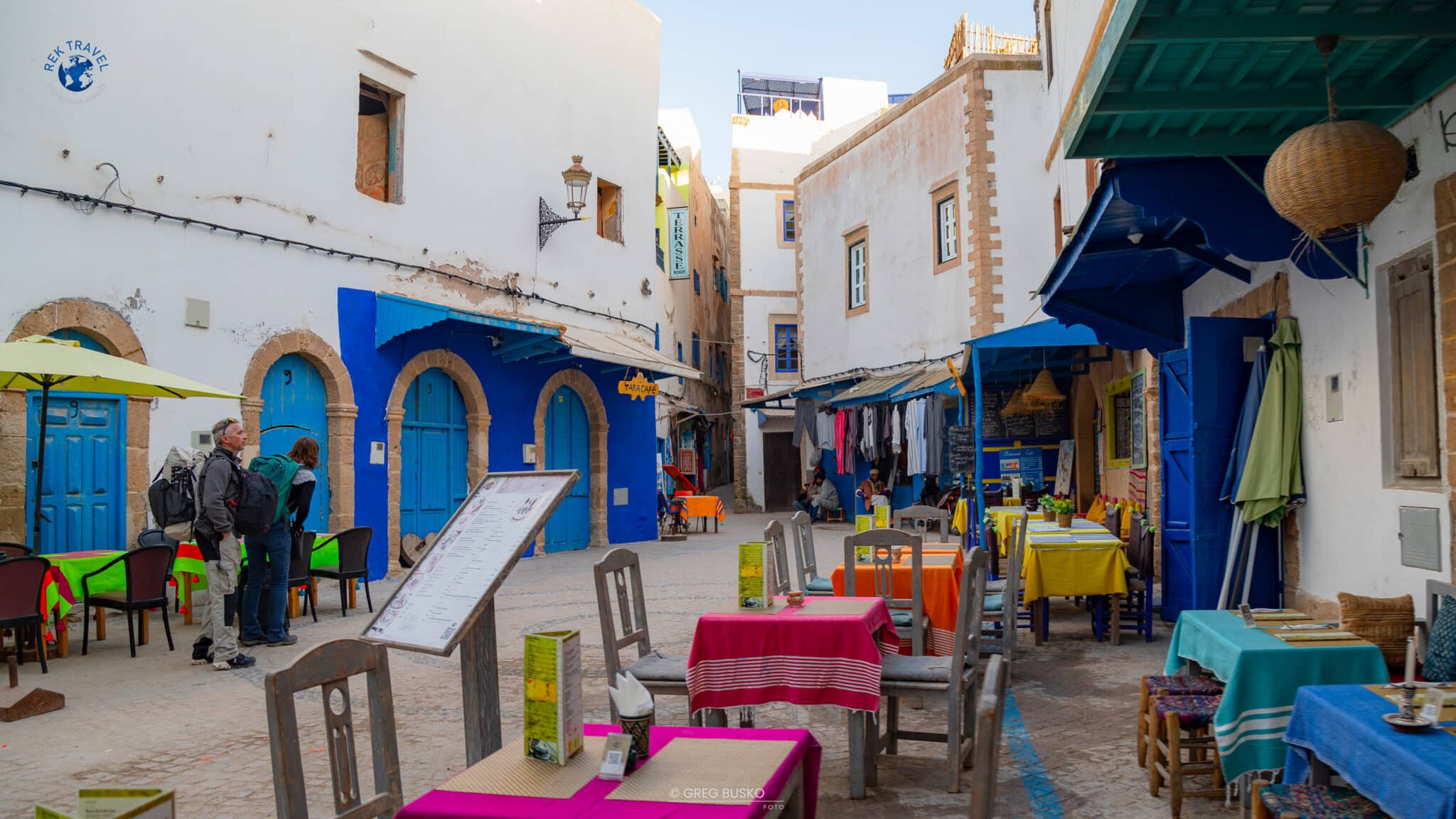
Essaouira, Casablanca
Extending our stay in Essaouira, we check out of the hotel a bit later, allowing us to linger in the captivating ambiance of this coastal gem. For those seeking an extra dose of adventure, camel or quad rides along the pristine beach await, offering a unique perspective of Essaouira’s scenic beauty.
In the early hours, seafood enthusiasts can savor the bounty of the ocean at one of the local restaurants, adding a flavorful touch to their Moroccan sojourn. As the morning unfolds, the town’s vibrant markets beckon, showcasing a rich array of souvenirs and artistic handicrafts—perfect mementos to carry home from this cultural haven.
Around noon, we bid adieu to Essaouira and set our course back towards Casablanca. A short break at the hotel provides a tranquil interlude before concluding our Moroccan odyssey. Join us as we savor the final moments in Essaouira and embark on the journey back to Casablanca, relishing the memories woven into the fabric of this remarkable expedition.

Departure from Casablanca
After waking up in the early hours or just before dawn, our group will head to the airport, where we will board a plane to leave Morocco. After days filled with new experiences, history, immersion in Moroccan culture, and the hospitality of our hosts, saying goodbye will undoubtedly be challenging. This will mark the end of our Moroccan adventure.
We invite you to explore other countries, such as Egypt or Kenya. Safe travels!
Treasures of Morocco 2024
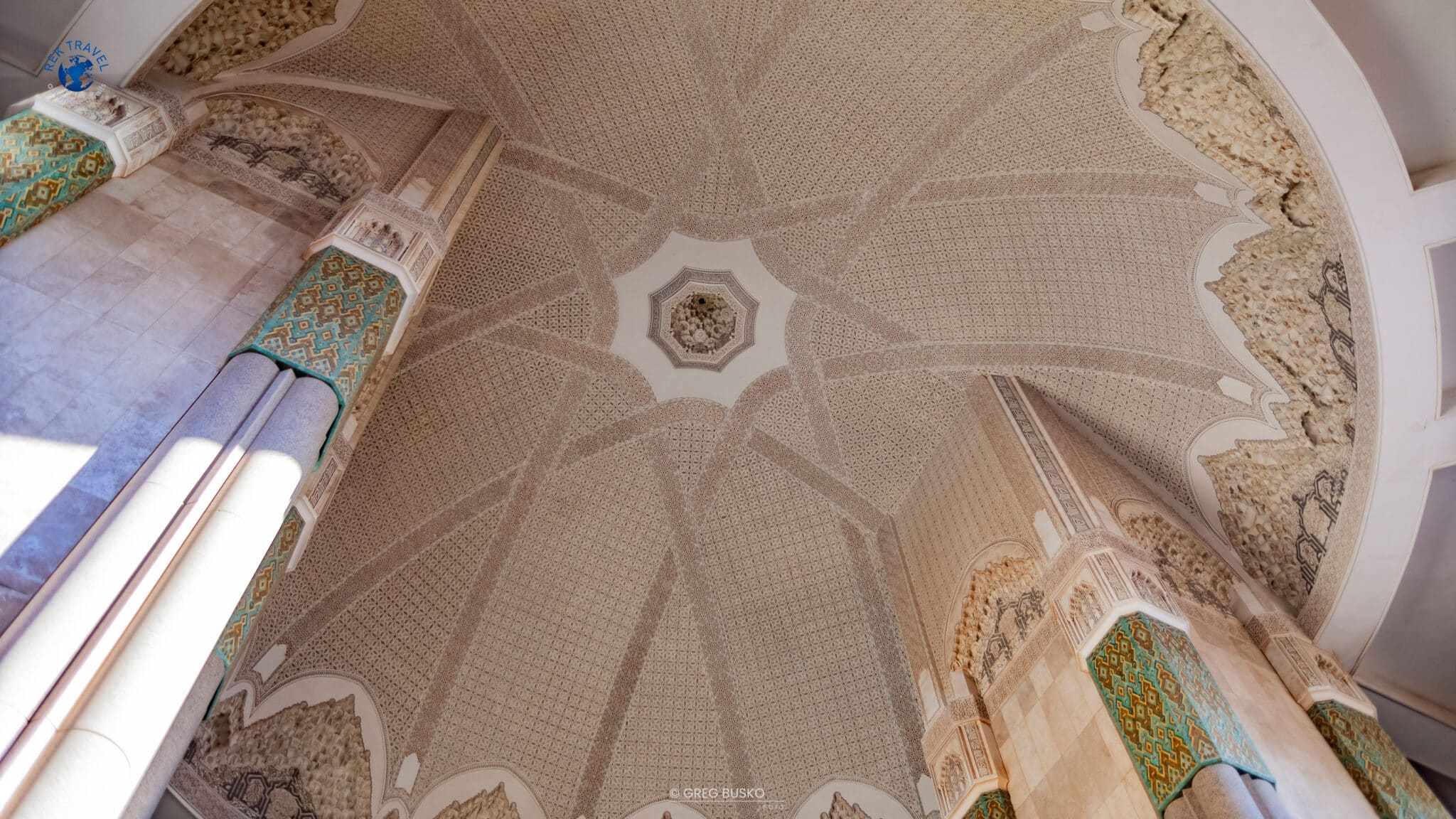
Selected tour route
The company is not responsible for any loss of customer's property due to burglary, theft, loss, etc. We also do not assume responsibility for any losses incurred by the customer in motels. Rek Travel reserves the right to change the itinerary due to circumstances beyond its control. The customer is obliged to comply with the tour regulations. Tour participants are insured according to the requirements of the US Department of Transportation for a total amount of $500,000 (insurance policy available upon request). Participants may opt for additional insurance coverage for hospital and outpatient treatment of illnesses acquired during the tour, as well as accidents in visited facilities (further information available at the office) for an additional fee.
 Rek Travel Adventure
Rek Travel Adventure
